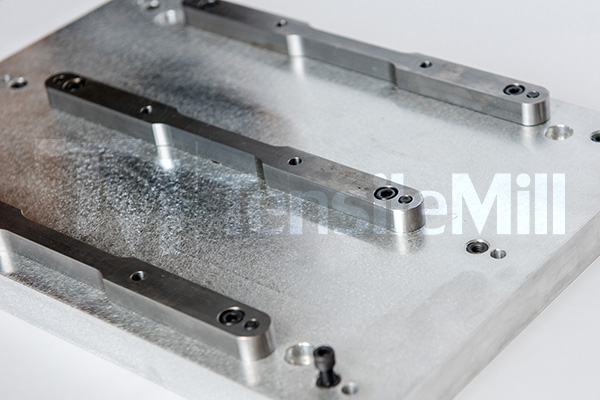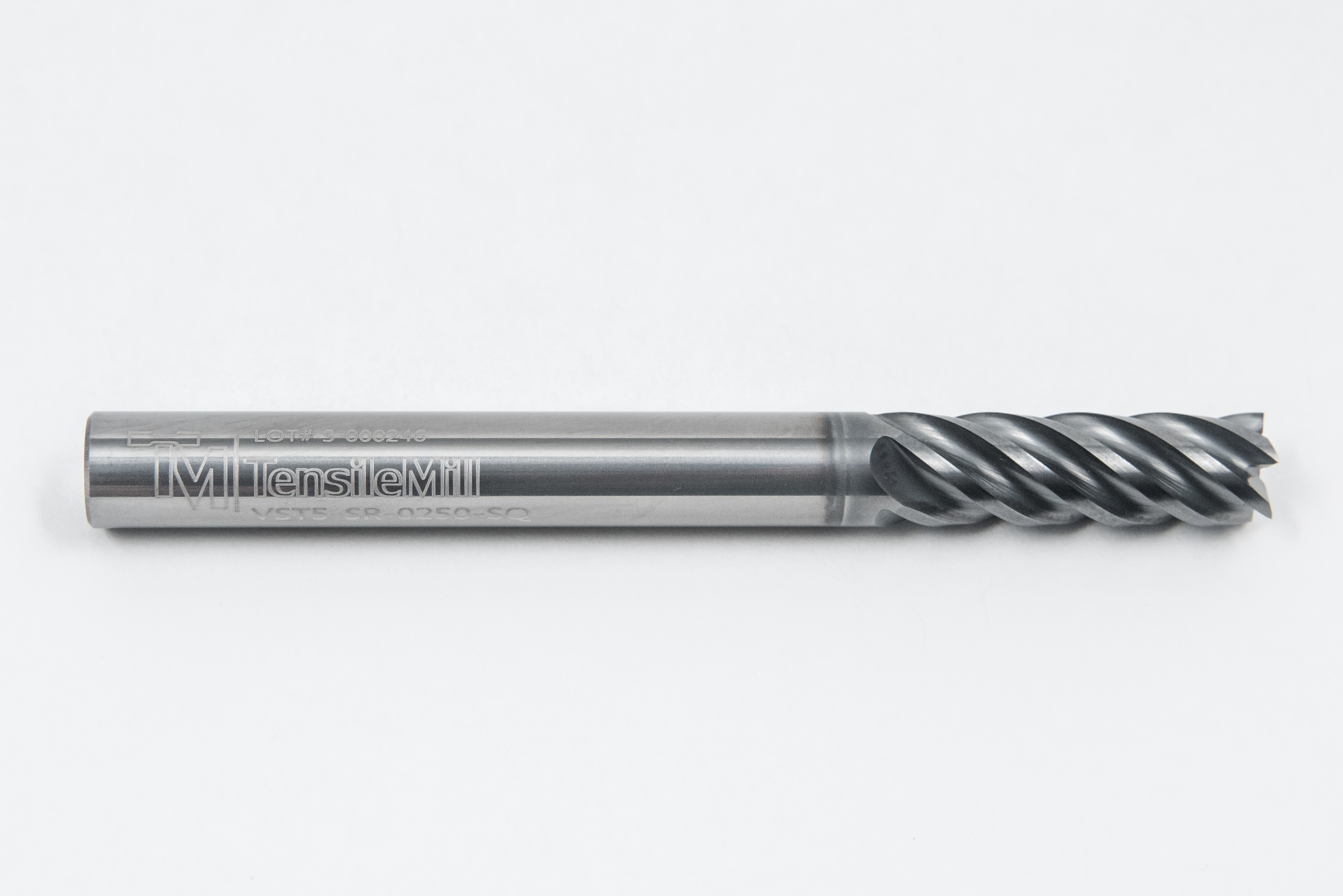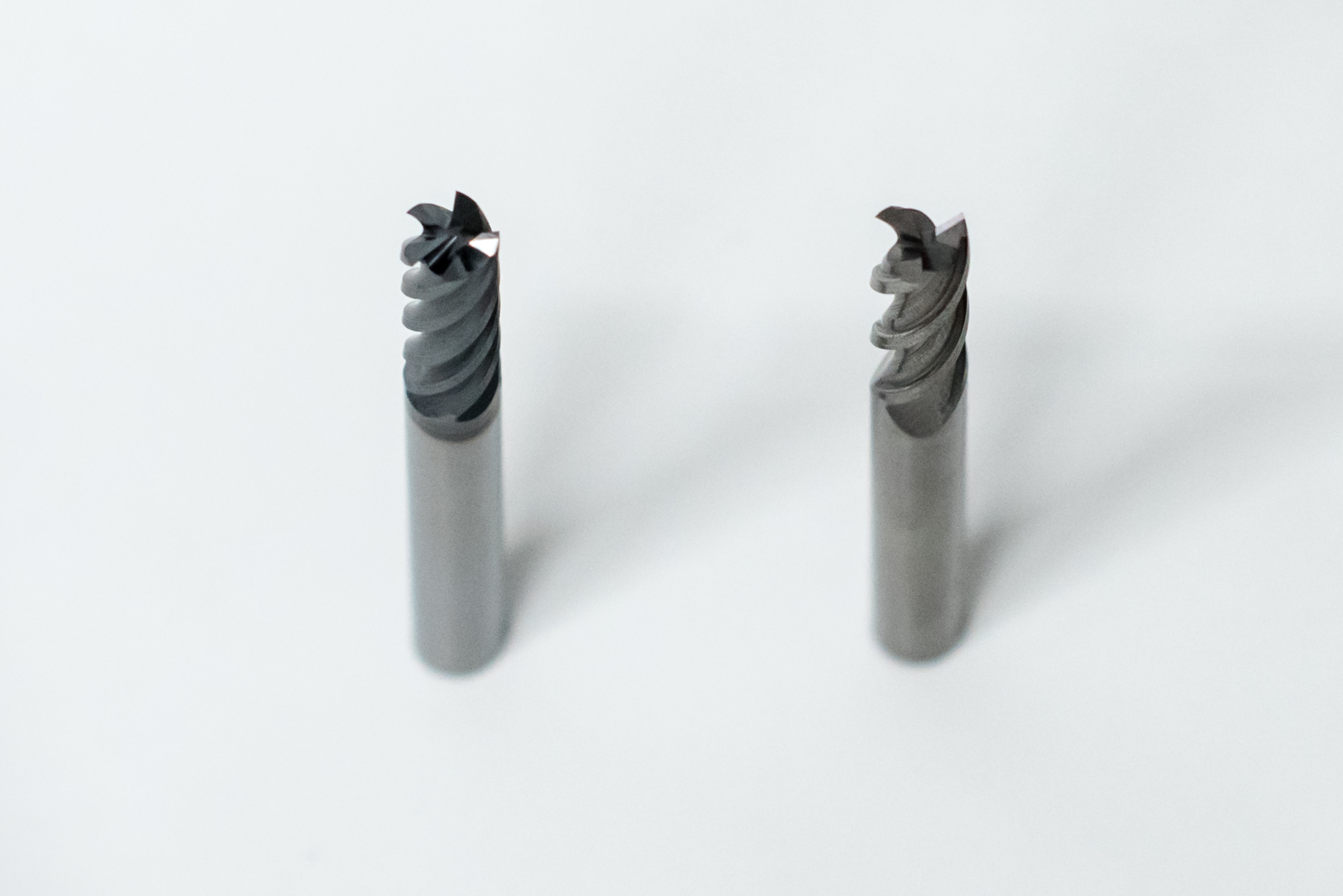The endmill is highly crucial consumable in the tensile sample preparation process. By shaping and cutting materials like wood, metal, rubber, and plastic, the endmill makes sure that every specimen that goes through the testing process will be in the proper shape and condition according to their respective specifications.
As such, choosing the right kind of end mill is equally crucial as an investment to make. The question, however, is this: how do you go about choosing the best Endmill for your material testing processes? Keep in mind that there is an Endmill for every job and material out there. It's up to you to look for the one that fits your need the most.
To do that, there are some considerations that you have to keep in mind first.
What's an Endmill?
When you look at an endmill, the first thing that might come to your mind is that it is just another fancy type of drill bit. However, the truth is that the Endmill functions differently from your conventional drill. Instead of drilling a hole downwards, the Endmill can "cut" sideways on any given material, which creates the testing specimen itself.

As was stated, endmills like the CNC precision endmill were designed to cut through different materials with minimum resistance. As such, you will find different endmills out there with varying sizes, sample material proficiency, cutting edge, and flute count. They may also slightly differ in the angle of their cut, as well as the shape of the cutting tip.
Of course, tools like CNC endmills were made with versatility in mind. Depending on the model that you will find, you can easily switch the blades and cutting tips to process materials with different degrees of hardness. Just keep in mind that the price of an endmill is directly proportional to its versatility. If it can cut more than one type of material, you can be certain that it will be a bit more expensive compared to its brethren.
However, they function with the same general premise. Regardless of the material that needs to be tested, the process will always begin with the operator taking a sample of the material and then feeding it to the cutting machine. Some preliminary cuts will have to be made, depending on the material for the sample to fit the machine.
Once done, all that is left to do is guide the machine in cutting the material. This phase is highly crucial as the machine does not exactly know what size and dimensions the operator is looking for in their testing sample. They will have to carefully guide the material through the blade until the most appropriate size and dimensions are met for the testing process.
Picking the Proper Endmill for You
Now that you know how each end mill functions, the next phase of the problem involves picking the model that will fit your workspace's needs. Again, remember that the ere is an Endmill model out there in the market for every workspace size, material type, and budget.
With that being said, there are 4 major factors you have to remember when choosing an endmill model.
Factor 1: Size
The cutting tips of an endmill have a diameter size that goes as big as half an inch to something as small as a needle. At the forefront, you might get the idea that you won't need endmills with small cutting tips but these cutters have their uses.
For instance, you might be working with a material quite delicate that you need a tool with a small, fine edge that can cut without causing the entire sample to crumble. On the other hand, you might be working with materials like wood and steel that would require all the brute force that your machine could muster. Thus, tips with larger diameter sizes will be necessary.
The actual size of the Endmill will also matter in this regard. Larger Endmills are more durable and can be used for multiple successive operations without malfunction. On the other hand, the smaller endmills are best used for more delicate sample material. Of course, the trade-off for that portability and ease of use will be their rather fragile structure. If you run them too fast, you might risk breaking them.
Factor 2: Length
Of course, endmills were designed with varying sizes to deal with different material thickness and density levels. As of now, you can get endmills in three length classes, namely:
- Stub
- Regular
- Long
As was previously stated, the length of the endmill determines how deep a cut it can produce in a material. As such, the general rule for choosing endmill lengths is to always match it with the overall thickness of your sample materials. You want something that can cut through your samples and not just leave a deep gash.
Longer endmills might have better chances of cutting through materials but they have a higher degree of bending or breaking. The longer material length means that there is more surface for stress to travel through every time that you use the endmill. Thus, if you are not careful, you might end up with a bent or broken endmill, especially if the sample material is quite tough.
Also, short endmills have their unique advantage. Aside from being the right material for thin sample materials, stub-length endmills offer more precision when it comes to cutting through corners. This is ideal if part of your testing processes involves studying materials with 3 dimensions.

Note: If you have to choose between cut length and accuracy, it is best to choose the latter. A shorter endmill will allow you to make 3-dimensional cuts or handle materials that will be subjected to a lot of pressure at the sides. Of course, shorter endmills have a lesser degree of breakage.

Factor 3: Shape
End mills have shapes that are based on the angle of the helix and rake indented to them. Each shape has a different level of efficiency, depending on the type of material that they have to cut through.
For example, an endmill with a drill point or with a center cut is best for situations where you have to bore through the material first before you can start cutting sideways. This is usually what happens when testing materials with hard surfaces like wood and metal.
On the other hand, non-centered end mills are best for situations where the material has to be cut from the side to get a sample specimen. And if the end mill has a ball end, this would mean that they are best suited for situations where you have to cut through angled surfaces or those with a slot or hole.
Factor 4: Flute Count
Every end mill will have a flute count ranging from 2 to 5. Why is this important, you ask? The flutes are the number of cutting edges in your end mills that will affect the quality of the cut.
For instance, if you use an end mill with 5 flutes, this will result in a cut that is smoother and smaller. This is ideal when working with fragile material. On the other hand, end mills with fewer flutes will result in rougher and jagged cuts but will produce fewer chips. This means that each operation of the end mill will produce not a lot of waste material.

Factor 5: Durability
The final consideration you should remember when looking for tensile specimen preparation consumables in the market is their ability to withstand a lot of stress without breaking. The durability of an endmill is dependent on what material was used to create them which are the following:
- High-Speed Steel - The standard for end mills right now, High-Speed Steel is designed to withstand friction, which is a common factor in operations like drilling and material testing. HSS works well in most situations but it does wear out after multiple uses.
- Carbide - This material is highly heat-resistant, which makes it ideal for high-speed tests on materials like cast iron, high-grade plastic, non-ferrous materials, and other tough objects. Due to its tough nature, carbide allows for end mills that are rigid and can be operated at 2 to 3 times the normal speed of HSS end mills.
- HSS Cobalt - This is arguably the toughest possible material for end mills. Cobalt can withstand a lot of heat and friction without degrading after prolonged multiple uses. The only caveat is their price as HSS cobalt end mills tend to be more expensive than the other two types.
What Brand to Choose
There are several manufacturers out there that claim to be the best provider of round tensile preparation equipment. But, of course, you would want to invest in a company that provides the quality as they promised.
So, how do you go about choosing the right manufacturer? Here are a few factors to keep in mind.
1. Compliance with Industry Standards - This is obvious but you should never pick a company that cannot show proof that it has followed standards in the industry. The manufacturer of your choice should have stringent quality control measures in place so they would regularly produce end mills of the best possible quality.
2. Referrals - Always seek manufacturers of tensile preparation equipment that have a sizeable list of referrals. What you have to understand is that feedback from people who have tried the products or have dealt with the company will be more informative than any marketing campaign. Of course, the feedback must be positive as you'd rather not deal with a manufacturer that got more complaints than actual referrals.
3. Support - If possible, chose a company with an extensive support network spanning the globe. This is important if you run a company with overseas branches. You'd rather have a manufacturer with a branch near where you operate so that the act of procuring products will be more convenient on your part.
4. Spare Parts - When it comes to machinery, having spare parts is always necessary. As such, look for a company that can furnish you with a spare part in every purchase or when you call for one. This way, you can cut down on unnecessary machine downtime.
5. Warranty - Lastly, pick a manufacturer that can give the best possible warranty for every end mill that you purchase. A 12-month warranty is the industry standard nowadays and this assures a sizeable period of free support like replacements and preventive maintenance for your end mills. And if the company offers something longer than that, that would be the better option. The point here is that you have to inquire about warranty periods when looking for an end mill provider.
The Best Possible Choice
One look at the factors above and you might think that looking for the best end mill manufacturer is going to be a daunting task. The truth, fortunately, is quite the opposite. A company like TensileMill CNC has the qualities that you are looking for in a dependable provider of end-mill-related solutions.
Each of their products passes through rigorous tests to ensure that they are capable of performing at optimal levels for as long as possible. Furthermore, warranties and post-purchase services are offered to ensure that every investment you make with the company will be worth every penny. If you are looking for top-quality manufacturer of tensile preparation equipment, all you have to do is to contact them as soon as possible.